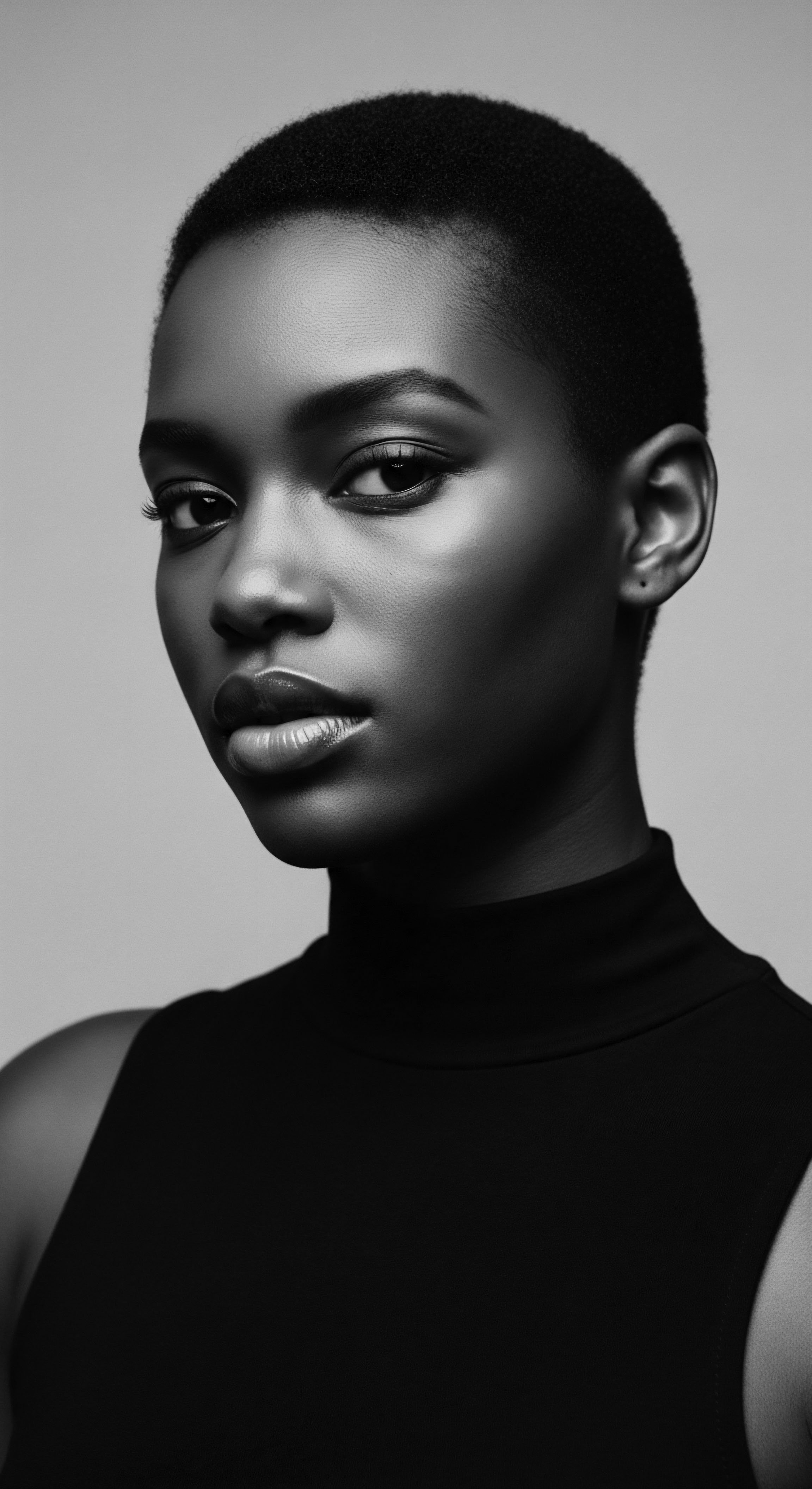
Roots
The story of textured hair is not merely a biological tale of coils and curls, but a vibrant saga etched deeply into the very soul of global heritage. It carries within its intricate patterns the echoes of millennia, a living archive of resilience, artistry, and connection to ancestral wisdom. For those with textured hair, this genetic inheritance extends far beyond the physical, becoming a profound cultural touchstone. It is a legacy shaped by landscapes, by community hands, by deliberate acts of defiance, and by enduring expressions of identity that transcend time and borders.
Consider the singular strands, each a testament to a lineage stretching back to the earliest human communities. This hair, often described in terms of its unique anatomical qualities, represents a complex symphony of cellular activity and structural design. The very shape of the hair follicle, typically elliptical or flat for coily textures, dictates the curvature of the strand as it emerges, creating the characteristic spirals and zig-zags.
This biological blueprint, passed through generations, speaks to an ancient adaptation to diverse environments. Traditional knowledge of hair care, long predating modern science, often centered on nourishing and protecting these distinct structures, using ingredients sourced directly from the earth.
Textured hair is a profound cultural touchstone, a living archive of resilience, artistry, and ancestral wisdom.

Hair Anatomy and Its Ancestral Resonance
The anatomical specificities of textured hair—its elliptical cross-section, the unique distribution of disulfide bonds, and its propensity for dryness—are not deficiencies, but rather characteristics that shaped distinct practices of care and adornment. From ancient African civilizations, knowledge of these qualities led to the development of sophisticated moisturizing techniques and protective styles. This ancestral understanding, often intuitive and passed down through oral traditions, laid the foundation for much of what we now understand through modern trichology.
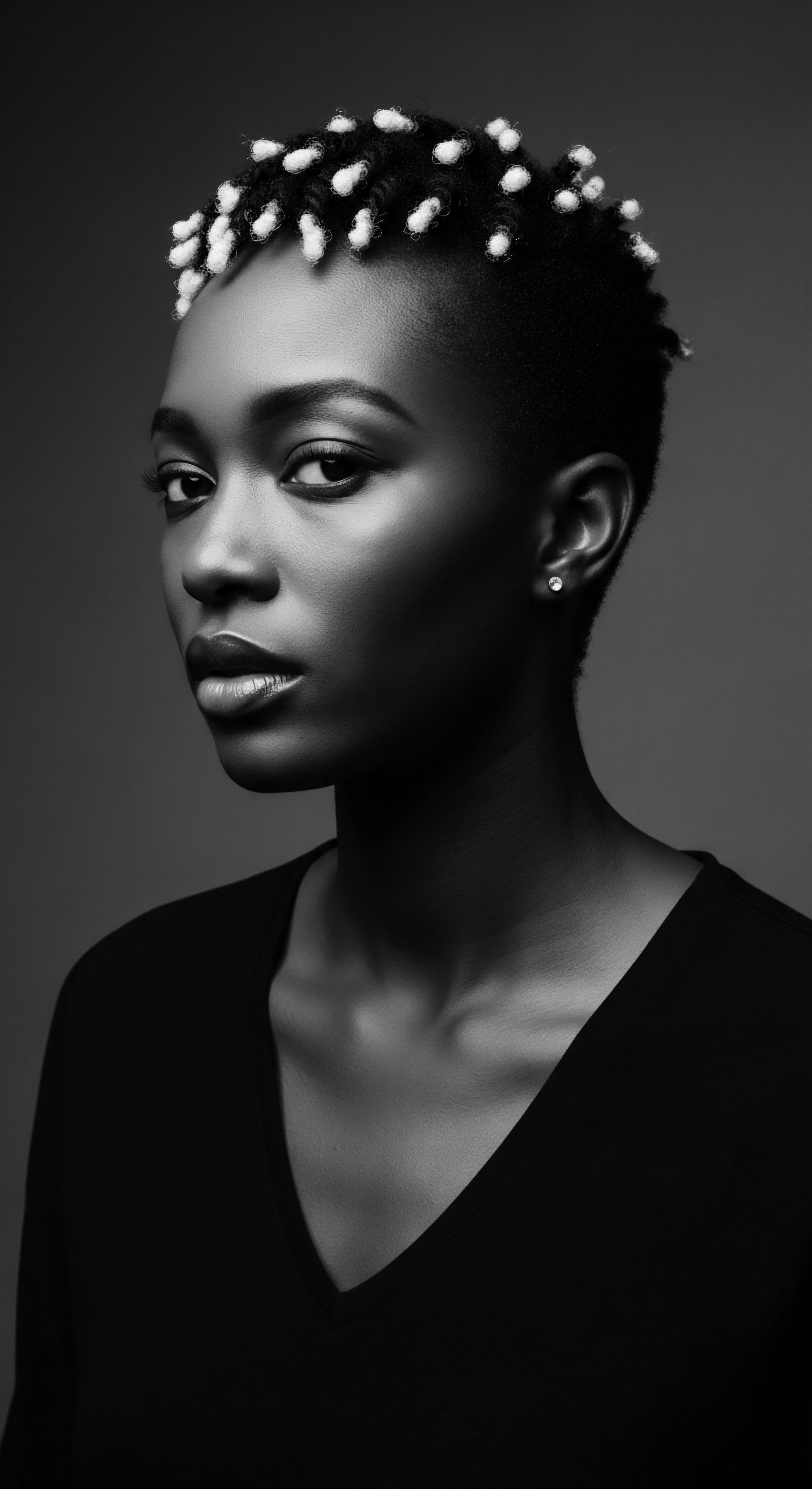
How do Anatomical Differences Influence Textured Hair Care Heritage?
The inherent dryness of coily hair, for instance, a consequence of its structure preventing sebum from traveling down the strand as readily as on straighter hair, spurred the historical use of rich butters and oils. In regions across Africa, substances like Shea Butter from the karite tree and Moringa Oil became foundational elements in hair regimens (Rovang, 2024; Our Ancestories, 2025). These natural emollients provided vital moisture, prevented breakage, and shielded hair from environmental stressors, such as the intense sun.
Such practices, born from observing hair’s needs and leveraging local resources, formed an early, comprehensive approach to care, deeply integrated into daily life. This is a clear example of how elemental biology and ancestral wisdom converged to define haircare heritage.

Hair Classification and Its Cultural Echoes
Modern textured hair classification systems, like those using numbers and letters to categorize curl patterns, attempt to bring scientific order to a vast spectrum of hair types. Yet, the history of hair classification also carries cultural biases, often implicitly or explicitly valuing hair closer to Eurocentric standards as “good” hair (Johnson, 2010). This contrasts sharply with ancestral viewpoints, where hair texture was often revered for its connection to lineage, spiritual beliefs, and social standing, without inherent judgment based on curl pattern.
In many African societies, the specific style or form of hair was itself a language. A hairstyle might signify age, marital status, tribal affiliation, or even a particular life event. This visual communication through hair, which transcended simple aesthetics, represented a complex societal codex.
| Aspect of Hair Purpose beyond appearance |
| Ancestral Cultural Understanding Social status, marital status, tribal identity, spiritual connection, communication of messages. |
| Modern Scientific Classification Primarily aesthetic, with increasing recognition of protective benefits. |
| Aspect of Hair Hair "Quality" |
| Ancestral Cultural Understanding Diversity celebrated; hair forms symbolic language. |
| Modern Scientific Classification Categorization by curl pattern (e.g. 3A, 4C); historical biases favoring straighter textures. |
| Aspect of Hair Care Approach |
| Ancestral Cultural Understanding Holistic, community-centered, reliant on indigenous plants and natural resources. |
| Modern Scientific Classification Product-driven, individualized; growing interest in natural ingredients. |
| Aspect of Hair The deep heritage of textured hair informs its appreciation today, bridging ancient reverence with contemporary understanding. |

A Lexicon of Legacy in Textured Hair
The words we use to describe textured hair carry weight. Beyond scientific terms, there exist traditional lexicons, often oral, that capture the deep cultural significance. From the rich terminology surrounding braiding patterns in West Africa to specific names for hair adornments, this language connects current generations to their heritage. The rejection of derogatory terms and the reclaiming of descriptive, celebratory language for textured hair mark a powerful movement, affirming the intrinsic beauty and value embedded within these strands.
For instance, the term “nappy,” historically used to demean textured hair, is being reclaimed and recontextualized by some as a term of endearment and defiance, a testament to the community’s power to redefine narratives. (Lester, 2000, 204)

Ritual
The ritualistic care of textured hair stretches back generations, a living testament to ingenuity, artistry, and communal bonds. It is in these practices that cultural heritage becomes tangible, passed from elder to youth, often accompanied by stories and songs that carry the collective memory of a people. These are not merely acts of grooming, but profound expressions of identity, resistance, and connection to ancestral wisdom. The techniques, tools, and transformations associated with textured hair styling stand as a vibrant chronicle of survival and celebration against societal pressures.
In the heart of many African communities, hair braiding was not a solitary task, but a deeply communal event. It served as a setting for intergenerational teaching, social bonding, and the exchange of oral histories (Our Ancestories, 2025). The intricate patterns themselves were a form of visual communication, relaying information about social status, age, marital standing, and even tribal affiliation (Dream Hair Care LLC, 2023; Our Ancestories, 2025; Elom African Braids, 2023). This ancient practice, carried across continents through the transatlantic slave trade, became a powerful symbol of resistance and cultural preservation for enslaved individuals in the Americas (The History Of Black People Braiding Their Hair, 2023).
Hair rituals are profound expressions of identity, resistance, and connection to ancestral wisdom.

Protective Styling Ancestries
The realm of protective styling for textured hair has roots that delve into ancient practices, designed to shield delicate strands while promoting their well-being. Styles like cornrows, box braids, and various twists, widely popular today, find their direct lineage in African traditions that predate colonization (Elom African Braids, 2023). These styles served a dual purpose ❉ practical protection from the elements and a means of expressing cultural identity.
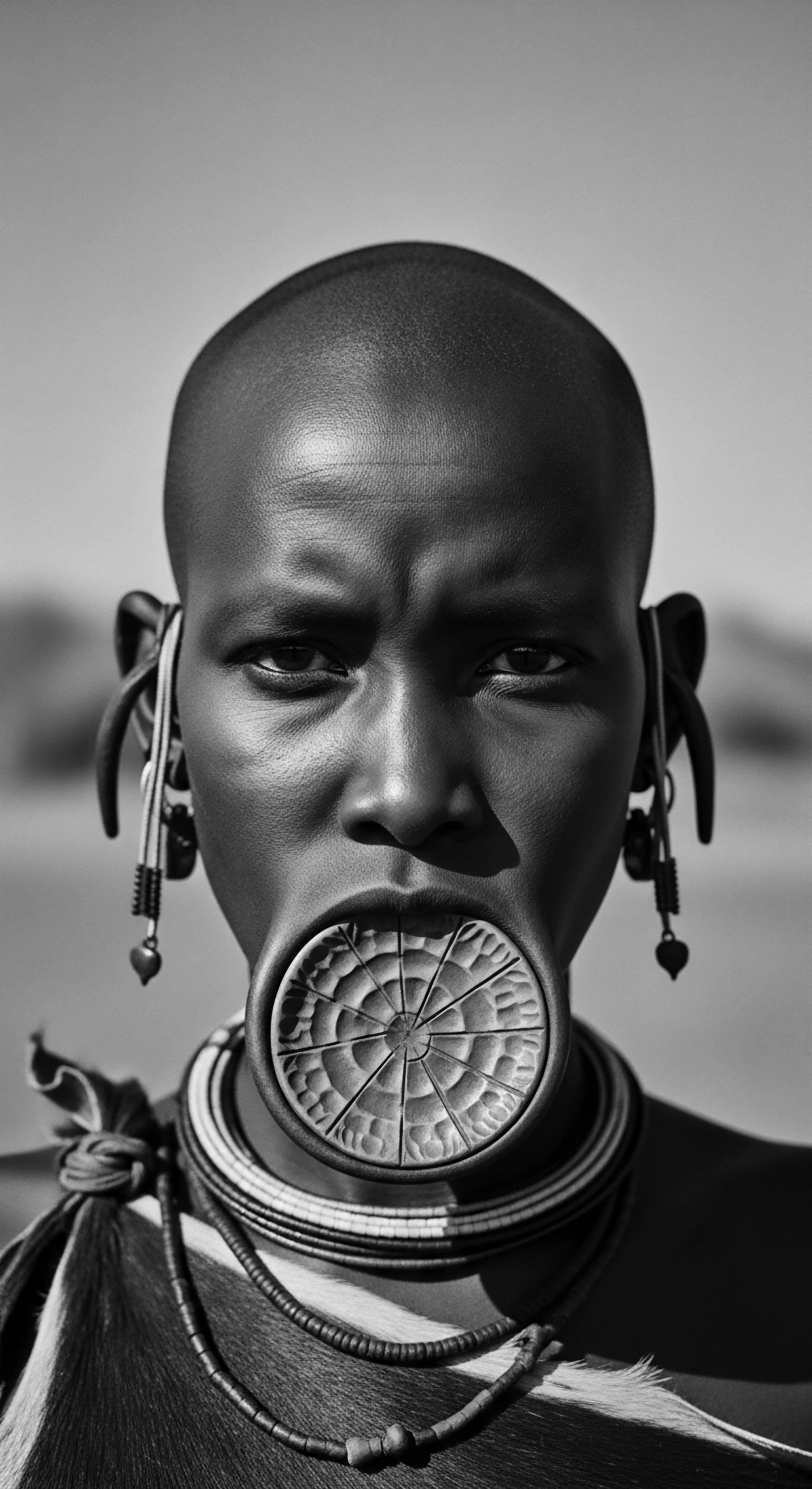
How do Ancestral Protective Styles Shape Contemporary Practices?
Consider the Cornrow. Evidence of these tightly woven braids exists in ancient African sculptures, underscoring their longevity as a traditional style (Our Ancestories, 2025). During slavery in the Americas, cornrows were not only a way to maintain hair but also served as maps for escape routes, sometimes even concealing rice and seeds for survival (The History Of Black People Braiding Their Hair, 2023).
This historical example powerfully illuminates the direct connection between textured hair heritage, Black experiences, and ancestral practices. The continuity of cornrows and other protective styles today speaks volumes about their enduring efficacy and symbolic power.
- Cornrows ❉ Ancient linear braids, often close to the scalp, used for protection, communication, and mapping escape routes during slavery.
- Box Braids ❉ Individual braided sections, originating from various African tribal styles, signifying wealth or marital status in some contexts.
- Bantu Knots ❉ Small, coiled buns, a protective style from the Zulu tribe of South Africa, preserving moisture and preventing tangles.

Natural Styling and Heritage Methods
The celebration of natural textured hair in its unbound glory is a contemporary movement with deep historical resonance. For generations, cultural standards imposed from outside communities often pressured Black individuals to conform to Eurocentric beauty ideals, leading to the suppression of natural curls and coils (Annie International, Inc. 2023; Team True Beauty, 2023). The resurgence of natural styling reclaims this heritage, connecting individuals to practices that honor their inherent hair structure.
Traditional methods for defining curls involved simple, natural ingredients and techniques. Water, often combined with various plant extracts or oils, was central to hydrating and clumping curls. The hands, themselves, were the primary tools, shaping and setting hair with a knowing touch passed down through families.
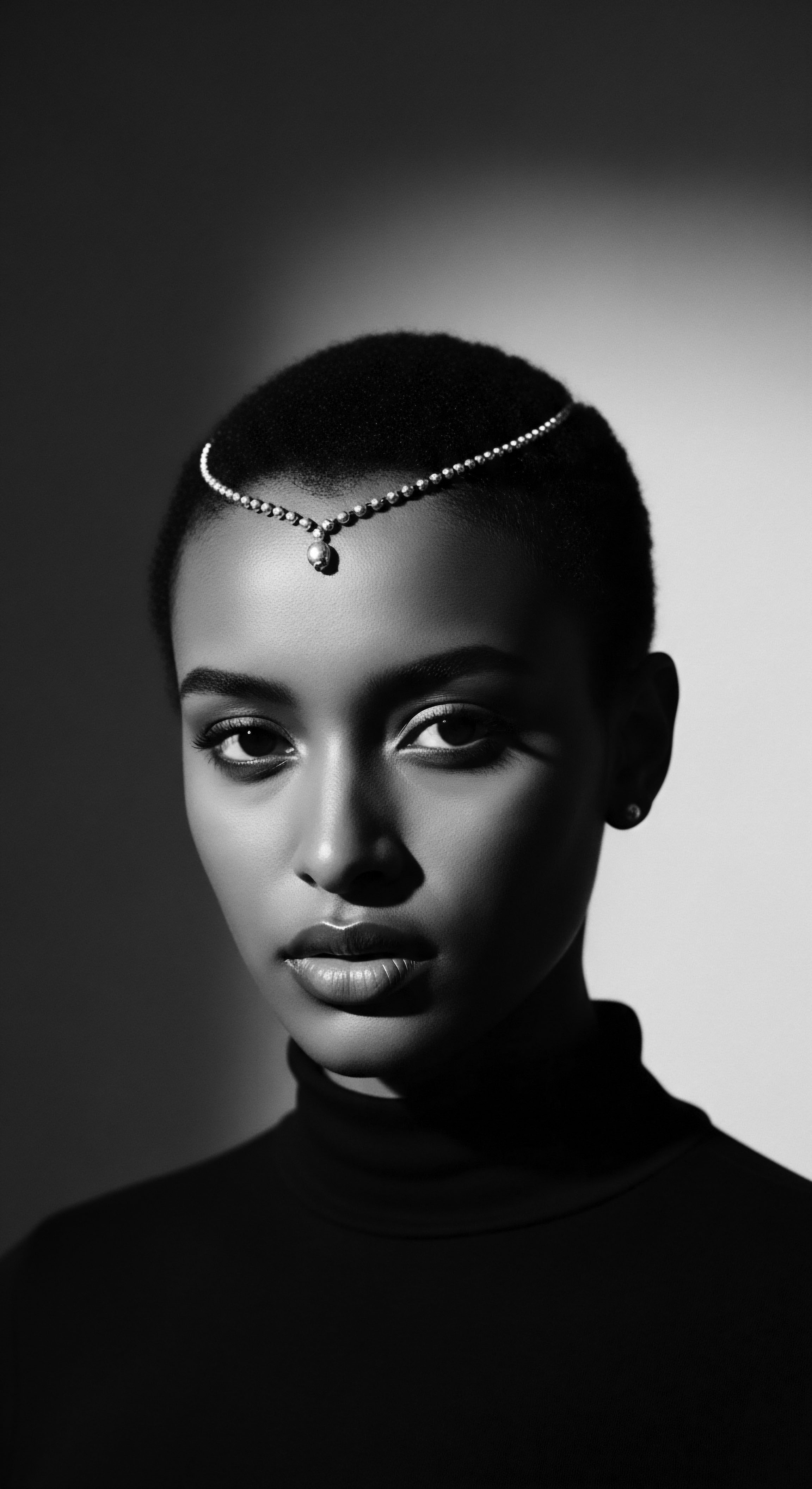
Tools of Tradition and Transformation
From intricately carved combs to simple wooden picks, the tools associated with textured hair care are not merely functional objects; they are artifacts of cultural continuity. These implements, often crafted from natural materials, reflect an intimate understanding of hair’s unique needs. Their designs often reveal the aesthetic values and artistic expressions of the cultures they originated from.
The shift to heat styling in the early 20th century, spurred by a desire to align with prevailing beauty standards, brought forth new tools like the hot comb (Annie International, Inc. 2023). While these tools offered versatility, they also presented challenges, often causing damage if used improperly.
The contemporary emphasis on safety and the judicious use of heat, often with protective measures, acknowledges this historical context, seeking to marry modern styling desires with hair health. The complete textured hair toolkit today often includes a blend of traditional wide-tooth combs and modern brushes, reflecting a hybridized approach to care.

Relay
The narrative of textured hair is profoundly interconnected with its global practices, serving as a powerful conduit for cultural heritage. It is a story told not just through the biological makeup of a strand, but through the deliberate acts of care, the communal rituals, and the enduring symbols woven into its very fiber. This understanding moves beyond superficial appearances, delving into the historical, societal, and even political dimensions that have shaped the meaning and experience of textured hair across the diaspora.
Hair is often a site of both personal and collective identity, particularly for Black and mixed-race communities (Johnson, 2013). The struggles and triumphs associated with textured hair reflect broader societal attitudes towards race, beauty, and autonomy. This is particularly evident in the historical policing of Black hair, an attempt to control identity through appearance.
Textured hair practices are powerful conduits for cultural heritage, weaving together history, identity, and resilience.

Hair Regimens and Ancestral Wisdom
Building a personalized textured hair regimen today often involves a conscious return to ancestral principles of care. This is not a mere nostalgic glance backward, but a strategic incorporation of time-tested methods validated by experience across generations. The emphasis on moisture retention, scalp health, and gentle manipulation—cornerstones of modern textured hair care—find deep resonance in traditional African practices.
For centuries, African communities formulated their hair care solutions from indigenous resources. Early African shampoos, for instance, were often multi-purpose bars of soap, while conditioning involved leave-on products crafted from a rich variety of natural oils, butters, milks, powders, and resins (Happi, 2021). These homemade concoctions were tailored to individual needs and climatic conditions, showcasing an advanced understanding of botanical properties.
One potent example of this ancestral wisdom is Chebe Powder, originating from the Basara Arab women of Chad. These women are renowned for their exceptionally long, thick hair, a result of their consistent use of this traditional blend of herbs, seeds, and plants (Helix Hair Labs, 2025). Chebe powder doesn’t stimulate hair growth from the scalp; rather, it aids in length retention by strengthening the hair shaft, reducing breakage, and sealing in moisture, particularly beneficial for coily hair textures (Helix Hair Labs, 2025).
The traditional method involves mixing the powder with oils or butters, applying it to damp hair, then braiding it for days, allowing the ingredients to deeply nourish the strands (Helix Hair Labs, 2025). This powerful practice, passed down through generations, highlights a core principle of ancestral hair care ❉ consistent protection and deep hydration.
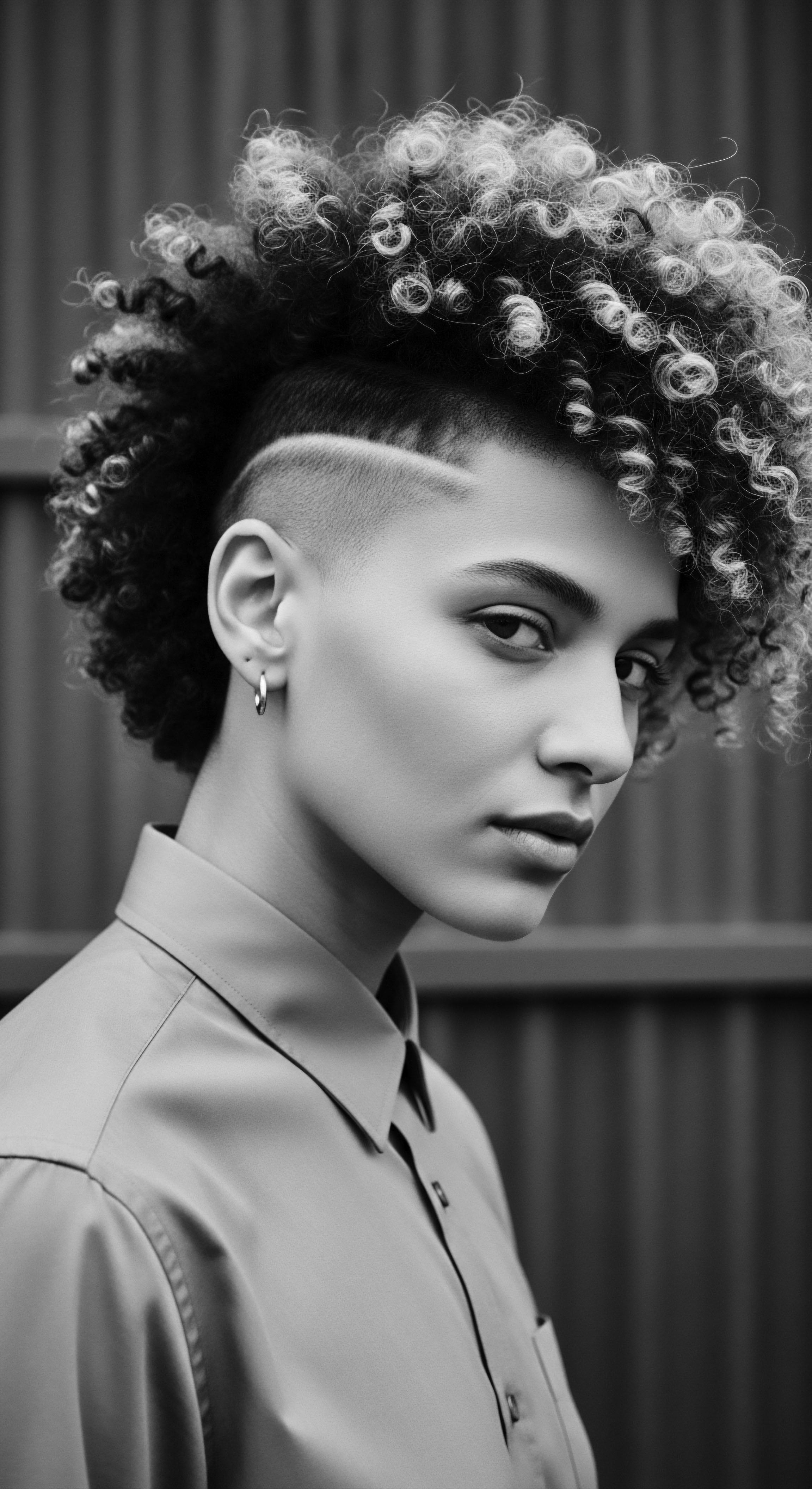
The Nighttime Sanctuary ❉ A Heritage of Protection
The ritual of protecting hair at night, now a widely recognized practice for textured hair, carries a significant historical weight. The Bonnet, often seen today as a simple accessory, holds a complex history deeply tied to the experiences of Black women (Annie International, Inc. 2023; Hype Hair, 2023; Team True Beauty, 2023). While European women also wore bonnets historically as symbols of modesty or high society (Helix Hair Labs, 2023), for Black women, particularly during and after slavery, the bonnet evolved into a symbol of both oppression and resistance.
Initially, enslaved Black women were often forced to cover their hair, a dehumanizing act aimed at erasing their identity and disconnecting them from their African heritage (Team True Beauty, 2023). Yet, with remarkable resilience, Black women reclaimed the head covering. The bonnet became a tool for self-preservation, protecting delicate hair from harsh conditions and allowing styles to last longer (Annie International, Inc. 2023; Hype Hair, 2023).
As the Civil Rights Movement gained momentum, the bonnet transformed into a symbol of Black pride and defiance against Eurocentric beauty standards (Annie International, Inc. 2023; Team True Beauty, 2023). It stood as a silent, yet powerful, assertion of autonomy and cultural identity. The continued use of bonnets and headwraps today is a direct link to this legacy of protection and resilience, a testament to the enduring power of ancestral practices in maintaining hair health and cultural pride.
This historical struggle and reclamation are exemplified by the Tignon Laws of 1786 in Louisiana. Governor Esteban Miró, seeking to enforce social hierarchies and curb the perceived “extravagance” and attractiveness of free women of color, mandated that they cover their hair with a headwrap called a tignon (The New York Historical, 2023; Essence, 2020; reframe52, 2024). These women, many of whom had achieved economic independence and wore elaborate hairstyles adorned with jewels, posed a challenge to the established racial order (The New York Historical, 2023; Essence, 2020). Far from being subdued, these resilient women transformed the tignon into a defiant fashion statement, utilizing luxurious fabrics, intricate tying techniques, and embellishments like feathers and jewels (The New York Historical, 2023; Essence, 2020).
The tignon became a mark of their beauty, wealth, and creativity, a powerful act of resistance that continues to inspire headwrap styles today (The New York Historical, 2023; reframe52, 2024). This episode powerfully demonstrates how forced conformity was met with creative subversion, deeply embedding hair practices into the narrative of resistance and cultural heritage for Black women in the diaspora.
- Shea Butter ❉ A rich moisturizer from the karite tree, used for centuries in Africa for skin and hair health, protecting against sun and environmental damage (Happi, 2021; Rovang, 2024).
- Chebe Powder ❉ An herbal blend from Chad, traditionally applied to hair to prevent breakage and seal in moisture, promoting length retention (Helix Hair Labs, 2025; Rovang, 2024).
- Aloe Vera ❉ Known as “Nature’s First Aid Plant” in African rituals, valued for its soothing and healing properties on scalp and skin (Our Ancestories, 2024).
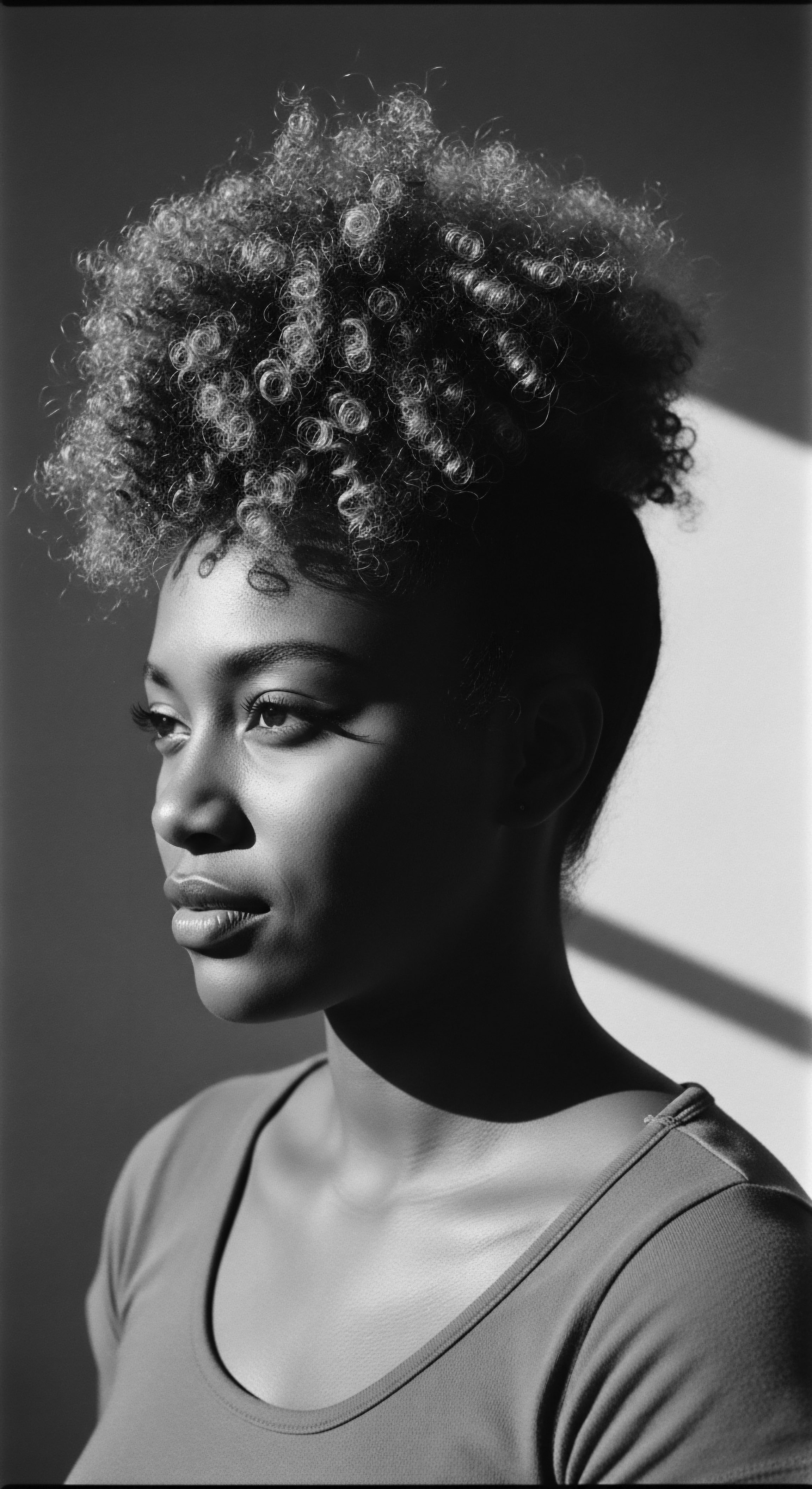
Holistic Wellness and Hair Health
The connection between hair health and overall well-being is not a modern discovery; it is a concept deeply rooted in ancestral wellness philosophies. Traditional African societies often viewed hair as an extension of one’s spiritual and physical state. Practices were holistic, encompassing not just external application of products, but also internal nourishment and communal care.
The ongoing natural hair movement is a powerful contemporary manifestation of this holistic heritage. It advocates for embracing natural hair textures and adopting regimens that prioritize hair health, often drawing inspiration from traditional methods and ingredients. This movement, while focused on hair, serves as a broader affirmation of self-acceptance, cultural pride, and a rejection of beauty standards that historically marginalized textured hair (Annie International, Inc. 2023; Hype Hair, 2023).
Elizabeth Johnson’s research in “Resistance and Empowerment in Black Women’s Hair Styling” highlights how hair choices are a physical manifestation of self-identity and a means for Black women to define themselves, challenging dominant beauty norms (Johnson, 2013). This underlines the psychosocial and emotional well-being aspects intertwined with hair care, revealing its deep cultural significance.
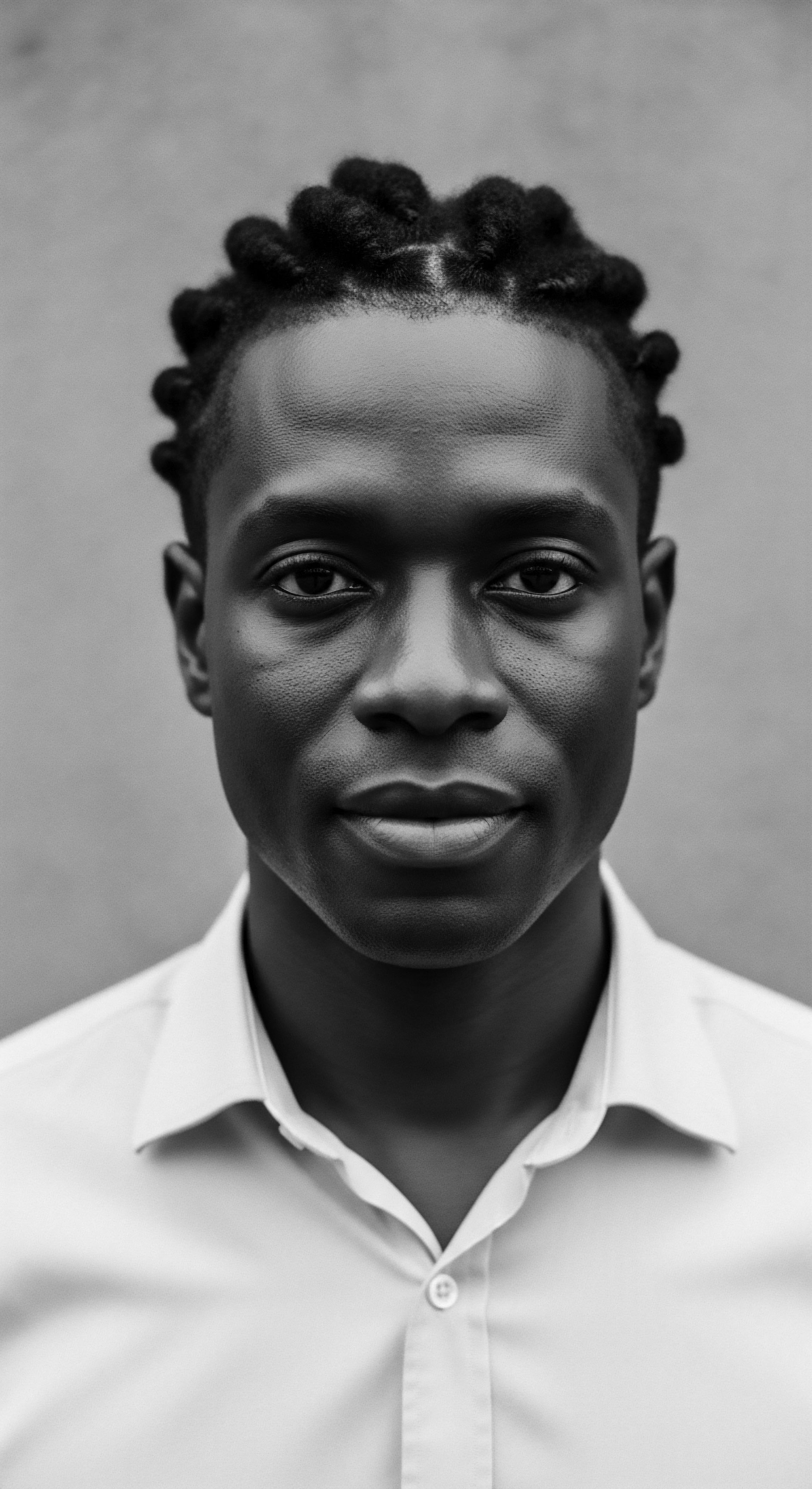
Reflection
The journey through textured hair’s heritage reveals a profound and multifaceted cultural tapestry. Each coil, every braid, and every act of care carries the whisper of ancestors, a living testament to ingenuity, defiance, and enduring beauty. From the elemental biology that shapes each strand to the intricate rituals that have sustained generations, textured hair stands as a powerful symbol of identity.
It mirrors the triumphs and tribulations of Black and mixed-race communities across the globe, serving as a tangible link to ancestral wisdom and a beacon for future generations. The concept of ‘Soul of a Strand’ truly resonates when we understand that hair is not merely a biological appendage; it is a repository of history, a canvas of artistry, and a vibrant expression of an unbroken lineage.

References
- Johnson, Kimberly. The Beauty of Resistance ❉ Black Hair and Identity in the Americas. University Press, 2010.
- The History Of Black People Braiding Their Hair. May 23, 2023.
- The History Of Black People Braiding Their Hair. The New York Historical, 2023.
- Our Ancestories. Braids, Beads, and Beauty ❉ Exploring African Hair Traditions With Your. April 4, 2025.
- Annie International, Inc. The Origin Story Of The Bonnet. December 21, 2023.
- Essence. The Tignon Laws Set The Precedent For The Appropriation and Misconception Around Black Hair. October 24, 2020.
- Dream Hair Care LLC. The History and Cultural Significance of Braiding. October 26, 2023.
- Elom African Braids. The History and Cultural Significance of African Hair Braiding. December 21, 2023.
- Happi. Hair Care Is a Focus in Africa. October 5, 2021.
- Team True Beauty. The Significance and History of Black People Bonnets. December 7, 2023.
- Rovang, Dana. Ancient Gems ❉ A Historical Survey of African Beauty Techniques. February 13, 2024.
- Helix Hair Labs. THE HISTORY OF THE HAIR BONNET. March 3, 2023.
- Hype Hair. Unveiling the History of the Hair Bonnet for Black Women. June 26, 2023.
- reframe52. Tignon Laws & Black Women’s Creative Resistance. February 8, 2024.
- Lester, Valerie. “Nappy Edges and Goldy Locks ❉ African American Daughters and the Politics of Hair.” The Lion and the Unicorn 24 (2) ❉ 201–224. 2000.
